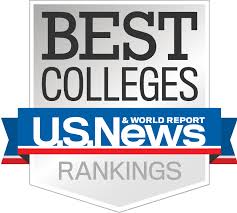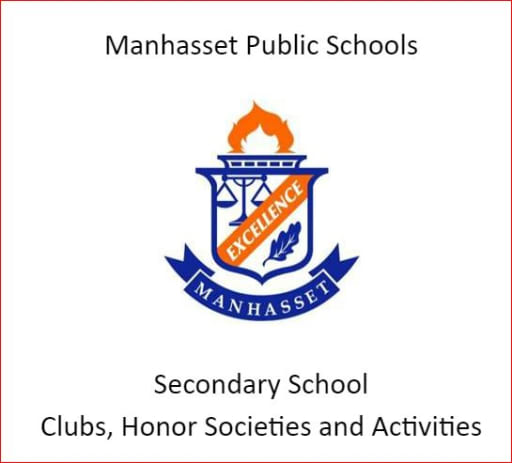Are New York Students Applying to Colleges at a Disadvantage?

The annual U.S. News & World Report’s ranking of American Universities was released in September. It is arguably the most well known and quoted list of its kind, and many high school students use the rankings as a reference when choosing a college.
When reviewing the rankings, there are some interesting observations. First, there is an uncanny relationship between the actual number for the acceptance rate of students for a University and it’s numerical ranking. Dartmouth College, as an example, has an 11% acceptance rate and the Ivy League school is ranked 11th among National Universities. Similarly, Brandeis University is ranked 34th and has (you guessed it) a 34% acceptance rate.
Clearly, the correlation has its limitations. The number one ranked school, Princeton University, cannot have a 1% acceptance rate because the lowest acceptance rate for any school is 5% (Stanford University). In addition, the 101st ranked school cannot have a 101% acceptance rate unless it’s permitted to accept the same student more than once. However, there is a remarkable correlation between schools ranked 5 and 38. Aside from Dartmouth and Brandeis, there are four additional schools where these two numbers are exactly the same: Stanford (5), Cornell University (15), Carnegie Mellon University (24), and University of North Carolina (30). In fact, more than half the schools ranked between 5 and 38 have acceptance rates that lie within 2 percentage points from their ranking.
For schools ranked lower than 38, the correlation between the acceptance rate and U.S. News & World Report’s ranking still exists, but there is a greater difference in the value of these two numbers. Schools ranked between 39 and 50 have an average acceptance rate of 38%, 51st to 60th ranked colleges have a 49% acceptance rate, 61st to 80th ranked schools have 5a 3% acceptance rate, and approximately 67% of high school students applying to colleges ranked between 81 to 100 received acceptance. This should surprise no one because U.S. News & World Report uses acceptance rate data when compiling their list. However, when learning how little weight the acceptance rate has on the overall ranking, the results become more confusing.
According to the U.S. News and World Report, “student selectivity” accounts for 12.5% of the colleges ranking. 65% of the student selectivity score is determined by the SAT and ACT scores of the enrollees, while 25% of the score is based on high school grades. The remaining 10% of the student selectivity score is based on the acceptance rate, meaning that the acceptance rate only accounts for 1.2% (10% of 12.5%) of the overall score for the University. So how is it possible that such a small factor seems to have such a huge influence on the overall ranking of the school? Factors that increase a University’s ranking in other ways may make the institution more attractive to high school students, which can increase applications, and reduce the acceptance rate. It may also be possible that the rankings themselves have a direct effect on the popularity of the school. It has been reported that one-rank improvement on the list leads to approximately 0.9% increase in the number of applications a school receives. Although one may argue that these rankings are inaccurate, it is hard to dispute it’s power in influencing students.
To a high school student, the acceptance rate of a school is crucial, because it allows them to determine which and how many schools to apply to. A student may also consider a school desirable if the U.S. News & World ranking is much higher (lower actual number) than its acceptance rate. For example, University of Illinois is ranked as the 44th best National University with an acceptance rate of 66%. Its acceptance rate is typical of schools ranked between 81 and 100, but is ranked among other Universities with much lower acceptance rates. Also, for instance, the University of California-San Diego was tied with the University of Illinois in 44th place but has a much lower acceptance rate at 34%. One can argue that it is relatively easy to get into Illinois, and its student can enjoy advantages more selective schools may provide. Other schools that share this “value” include Yeshiva University (66th ranked and 80% acceptance rate) and University of Virginia (24th rank and 30% acceptance rate).
On the other hand, there are schools that are relatively difficult to get into but not highly regarded on the rankings. These schools must have performed relatively poorly in other categories used by U.S. News & World Report, which include graduation rates (22.5%), academic reputation (22.5%), faculty resources (20%), and financial resources (10%). In other words, a student can do their best to get into a selective college, then find out it’s hard for them to graduate, people (employers and graduate schools) don’t think highly of the school, the school doesn’t teach very well, and that the University has no money. This is not good, and it is the reason why New York students are disadvantaged.
When looking at the list of 100 best National Universities, one school stands out as having the lowest “value” when relating it’s ranking with acceptance rate. Stony Brook University is ranked 96th on the list and has a 41% acceptance, for a difference of 55 percent. As a comparison, Drexel University is tied with Stony Brook for 96th place but has a 75% acceptance rate. To make matters worse for New York students, the only other public university from the state to make the list is Binghamton University, which is the second worst “value” school in the top 100. Binghamton is ranked 86th with a 42% acceptance rate, for a 44 percent difference. In comparison, Pennsylvania State University has a 51% acceptance rate and is ranked 50th.
It may be impossible to accurately rank colleges, and the U.S. News & World Report ranking may be nonsense. However, it’s popularity and influence are undeniable. When only 2 public state universities from New York are in the top 100, and both are not as highly regarded as other schools with similar selectivity (acceptance rates), it’s an unfortunate outcome for New York State students. Not all families have the luxury of sending their children to more expensive private universities, and the students who graduate from Stony Brook and Binghamton may not enjoy the level of respect they deserve.










